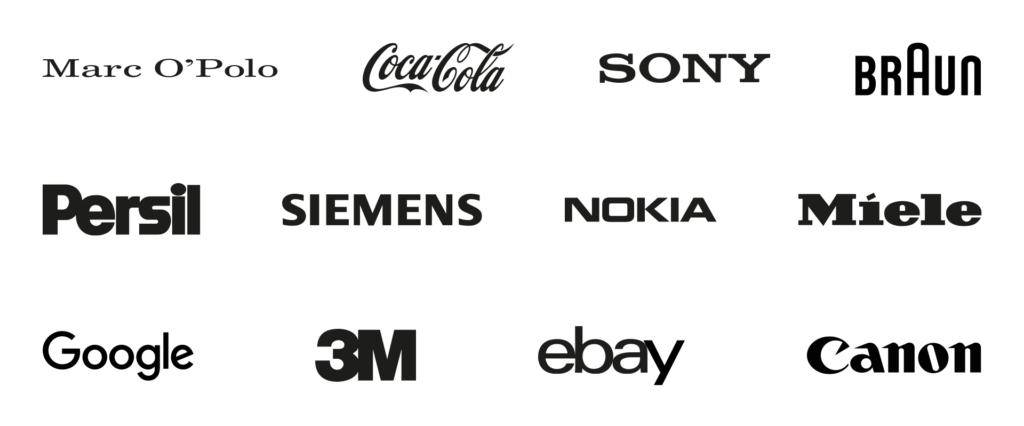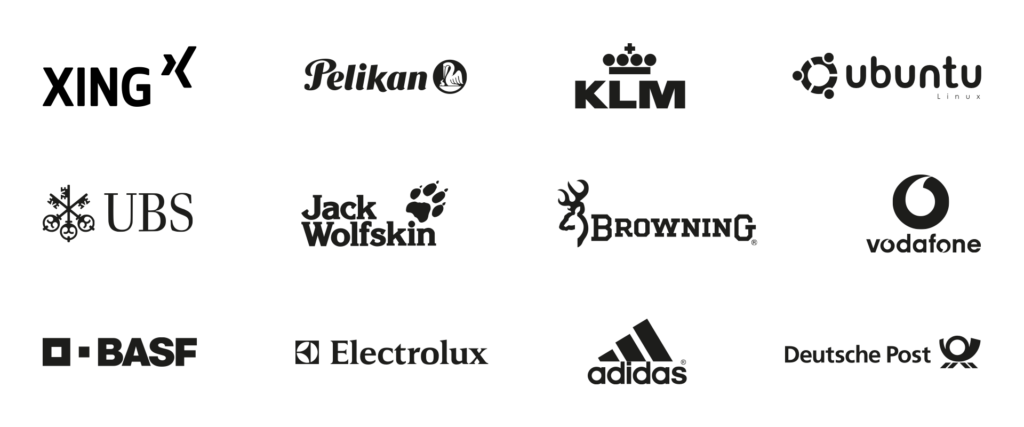We all know that a first impression of ourselves, whether real or perceived, creates a lasting impression on others. For a brand, 80% of what is visualization by those who see it is based on the same principle, namely sensory impression and how clearly that impression is received by consumers.
Through strong visualization and imagery, we immediately recognize if something appeals to us, interests us and is relevant. That’s why it’s immensely important that a brand visualization is consistently adhered to. The process of visualization and imagery is about design and creation of graphics, values, personality traits and sensory perception of what is being conveyed with it. Whether analog or digital, everything nowadays is subject to a given Corporate Identity (CI) and Corporate Design (CD).
Expanding on this idea is holistic brand management, which takes a broad and inclusive view of a product, such as a garment, and, as the brand language, plays a central role in manifesting itself to the target group and customers.
Those who invest in a clean brand building will profit sustainably in the long run. Essentially, 3 sensory dimensions must be covered:
- Design – what we all take in visually as well as auditorily and with all other senses, including the tactile.
- Behavior – defines itself most notably with the developed mission statements and company / brand values, through the organization’s lived culture and philosophy. Also, the organization’s communication and its event / events belong to the behavior code and internal processes from human resource to CRM.
- Language – how we meet and align the verbal tonality, underpinned by an organization’s clime / slogan, drives the nomenclature and especially the name of the brand or company, which are considered the most important form of representation.
With this, we position the brand / company and its services. It reflects what we want to present to differentiate the brand’s unique factors. In previous blogs, we discussed these issues (brand definition) in detail.
There is much value-adding potential in brand creation when designers keep above mentioned parameters in mind. Therefore, brand development focused on visual representation is enormously explosive and should be taken with caution. It is about the alignment of the emotional, conscious, and subconscious perceptions, which brings about rational decision making by the consumer. To implement a strategic specification requires a fine feeling for the conceptual creative performance, which generates the associated competitive differentiation through maximum individuality and emotionalization.
The first step is to create the brand, which is based on brand definition. This means defining the brand’s visual appearance. This must be brought to life by an organization by means of brand definition and brand values. This is because the brand image (logo) is created from this, which in turn is divided into three main levels.
On the one hand, we speak legally of a word mark, or figurative mark, and word/figurative mark. Besides the written name, the brand symbol can also have enormous charisma – as in the case of well-known brands such as Migros, Shell, BMW, Nike, Montblanc, Versace, etc. (some examples attached here).
Word Mark:

Picture Mark:

Word-Picture-Mark:

“Brand, logo, symbol – brand visualization is more!”
From where does the term “branding” come? Here we refer to the animal world and even go further back to the ancient breeds in antiquity. Livestock were “branded,” meaning they were physically marked so people knew to whom they belonged. The ancient Egyptians chiseled their writings into stone, ensuring their meaning up to the present day. Such visualizations outlast generations, and brands also have this approach.
A brand creation is also “untouchable” and requires continuity. Of course, slight adjustments can be made to suit the spirit of the times, but these should always be in line with the brand philosophy and values such as behavior. This results in today’s trust and brand loyalty, which can be measured in brand awareness. An unmistakable and comprehensible logo must be highly memorable and must be subjected to all reproduction techniques. Whether on paper, textile, other materials or in the digital environment, it must never change.
In many cases, the brand environment is also depicted, i.e., a visual language is developed based on the brand definition – this should also clearly stand out from the competition and should be positioned accordingly. Consumers’ feelings and perception must be decisive and lead to the brand’s desired outcome. Other features such as typeface, design, color coordination and related communication shape the brand!
Depending on the use of typography (fonts), legibility can be ideal or it might also prevent you from building a bond between consumer and brand. These characters (fonts) are selected in the analog as well as in the digital age and are extremely specific, so that the designer hits the brand definition in the heart of the consumer. In the strong age of digitalization of communicative brand management, brand definition becomes the pulsating heart of branding. Because typography is scalable and the texts therefore indexable, it becomes a decisive factor for search engine optimization (SEO).
Once the brand has been created and is set according to the above-mentioned processes in the form of holistic brand management, it is important for organizations to develop it and use it for the long term. A change to these processes could destroy the whole structure and put brand investment in question. Consistent brand appearance preserves brand values, consumer perception and attractiveness by the market for the long run.
ATTENTION: In the choice of implementation, many organizations claim to do it, but few understand and achieve it!
